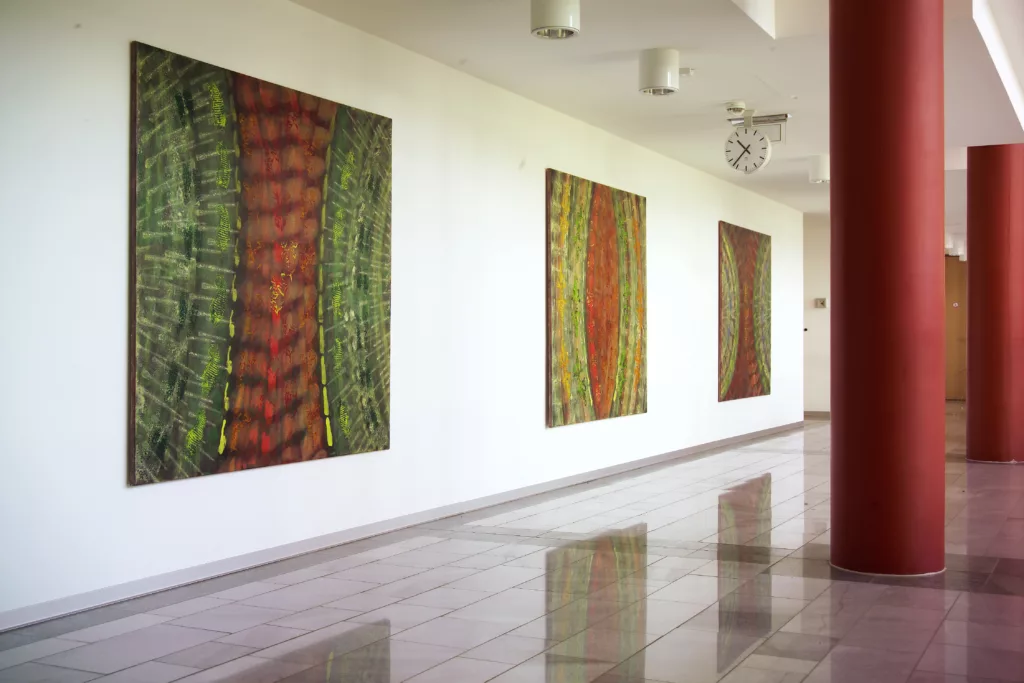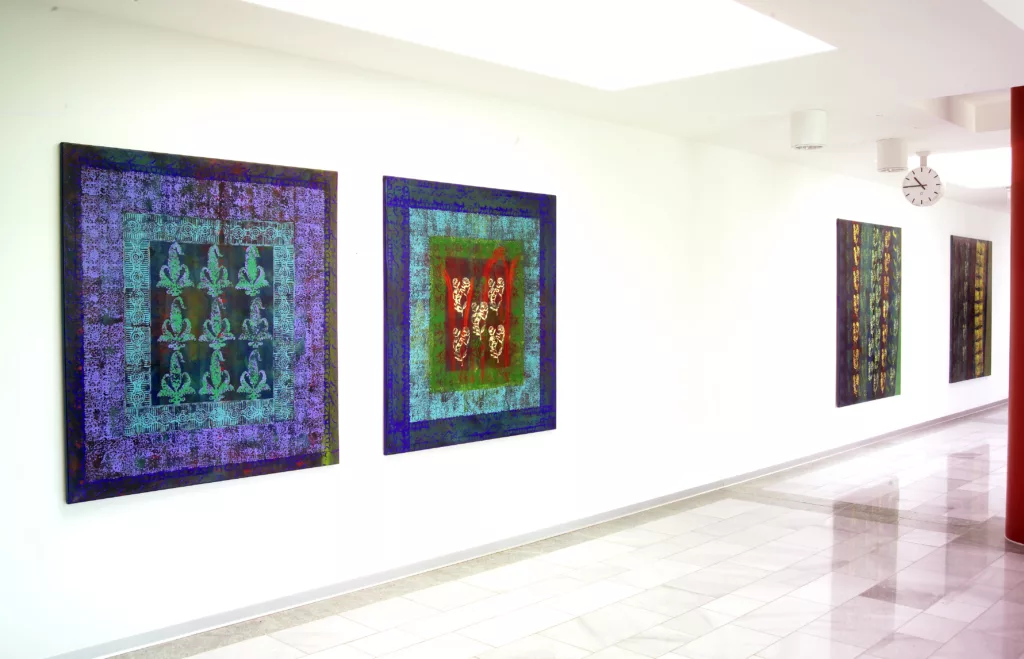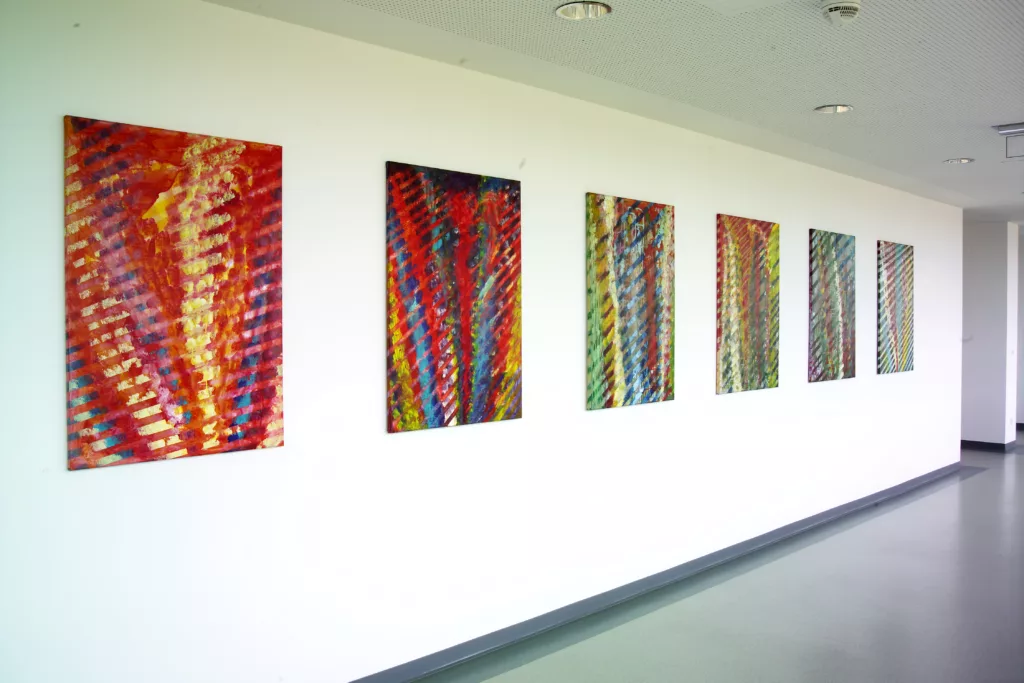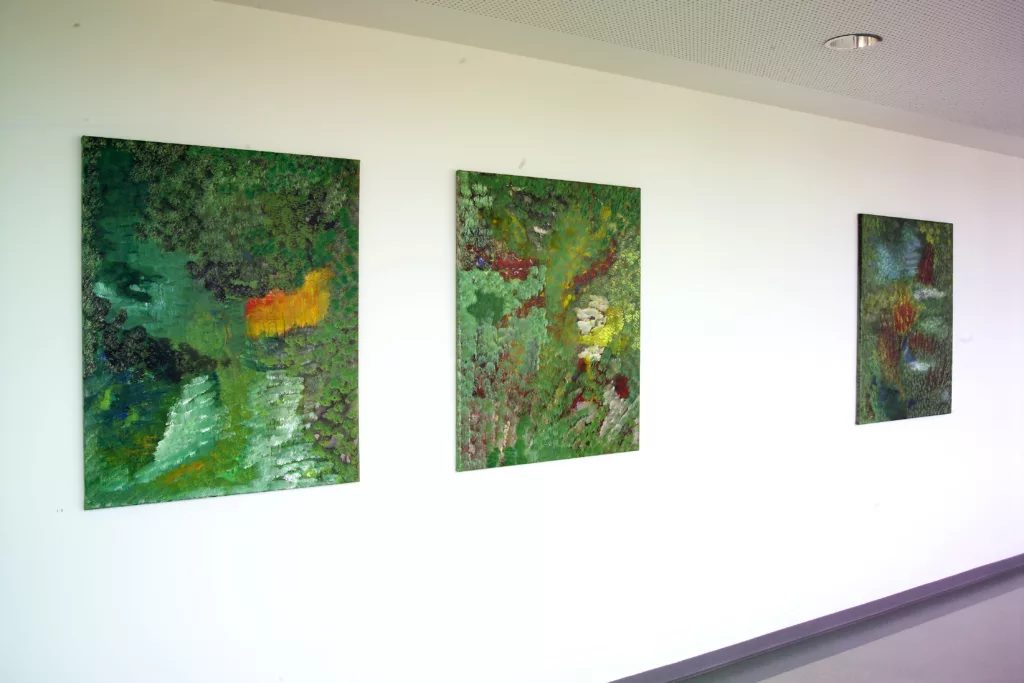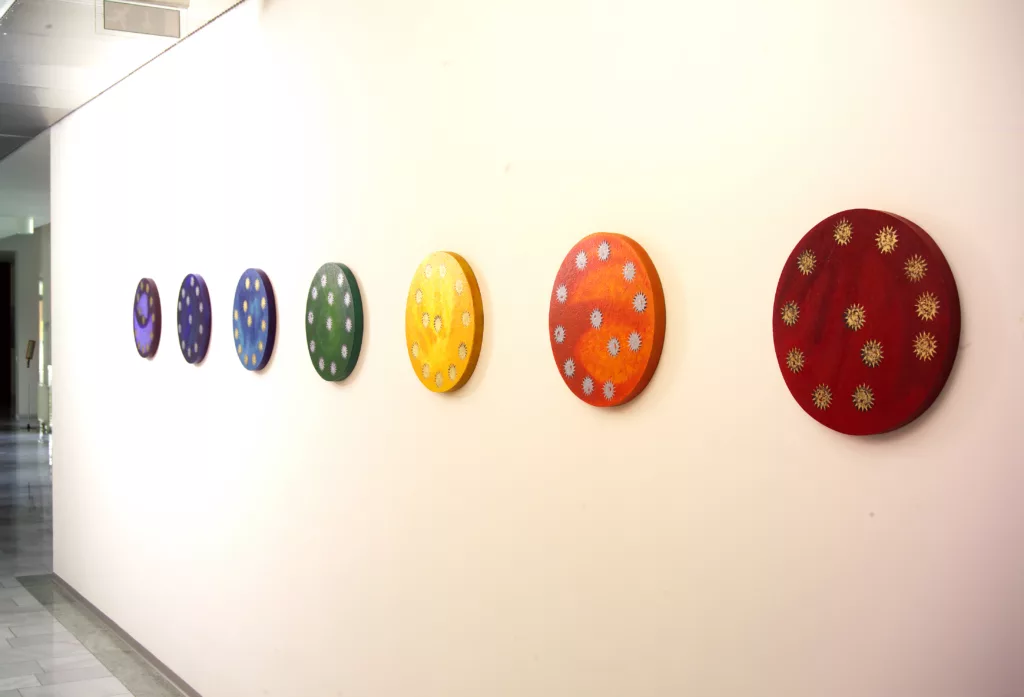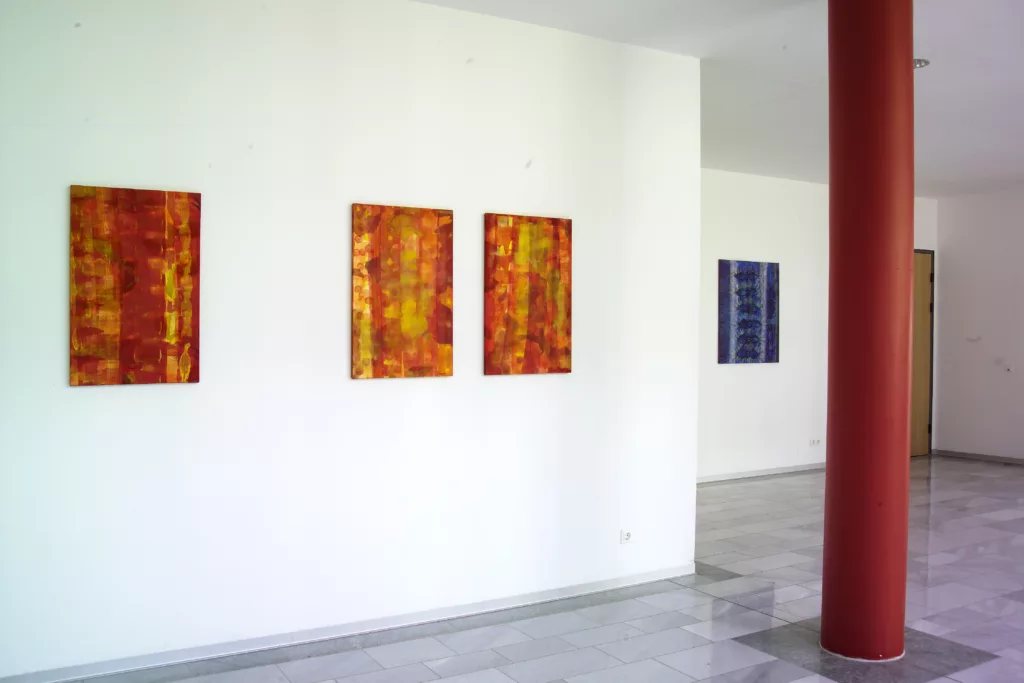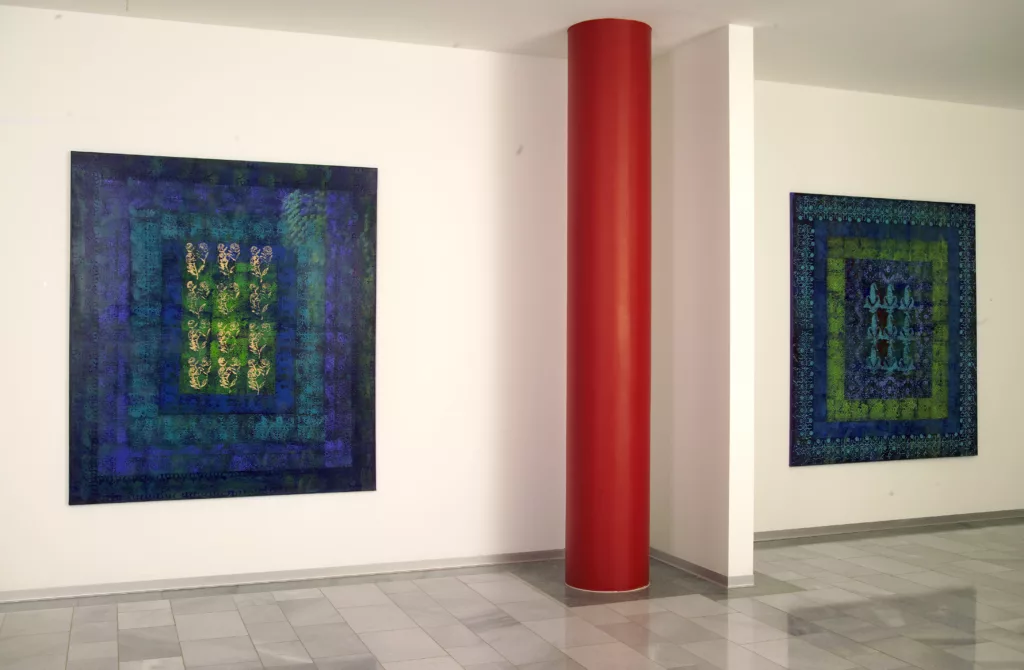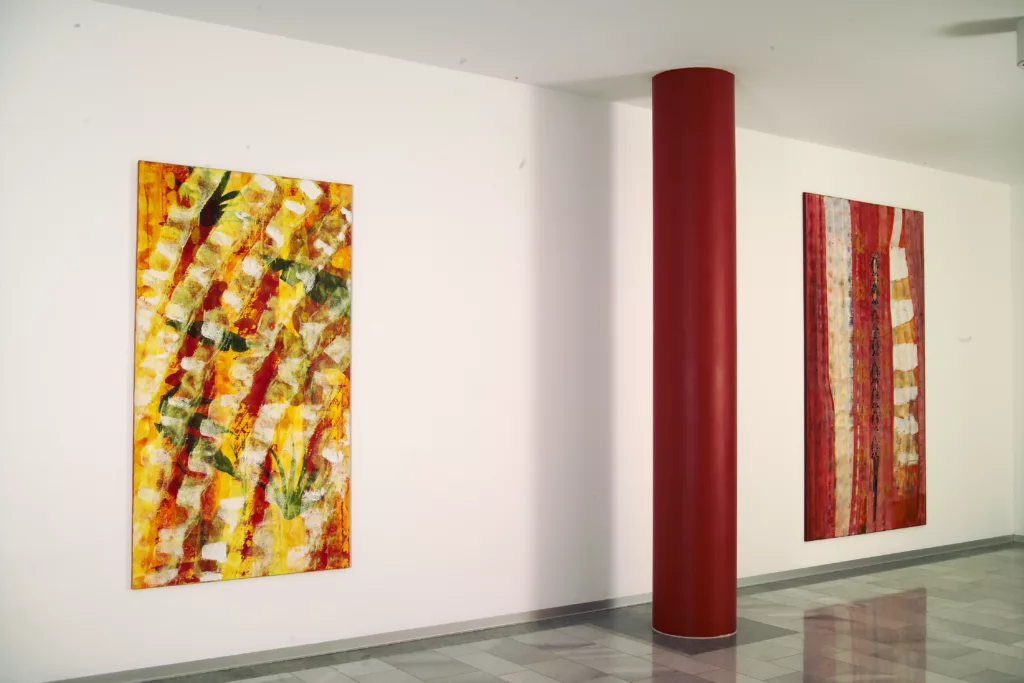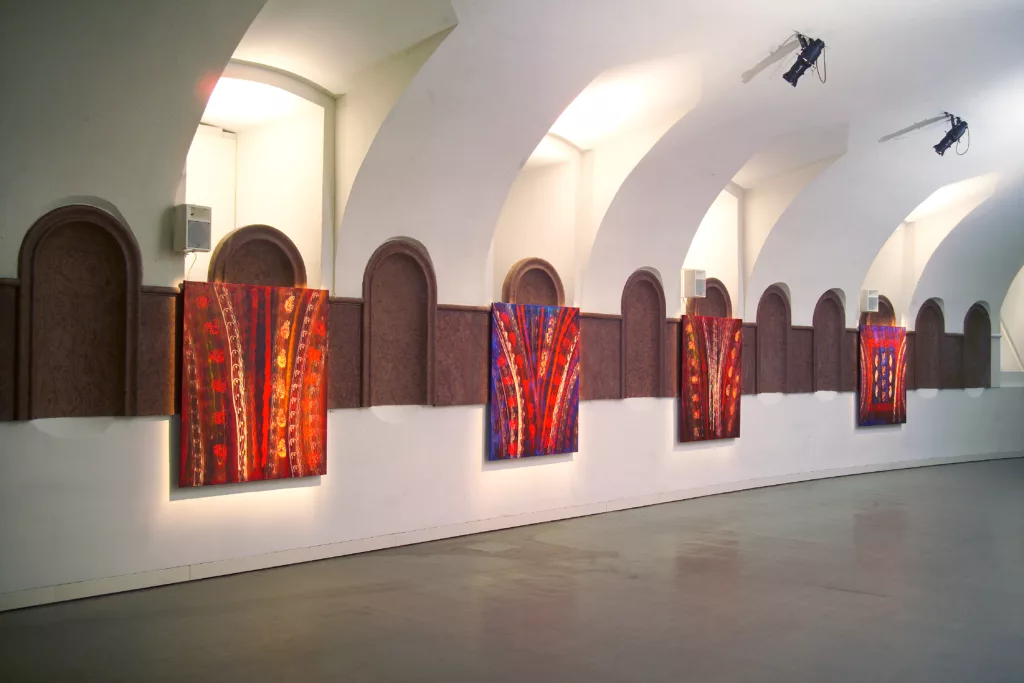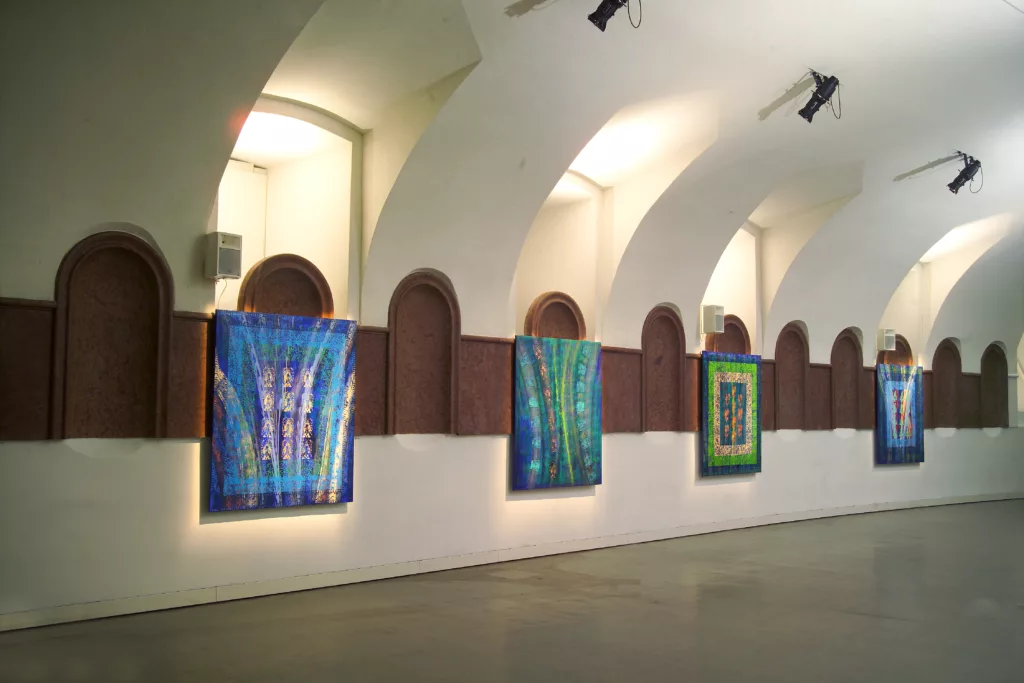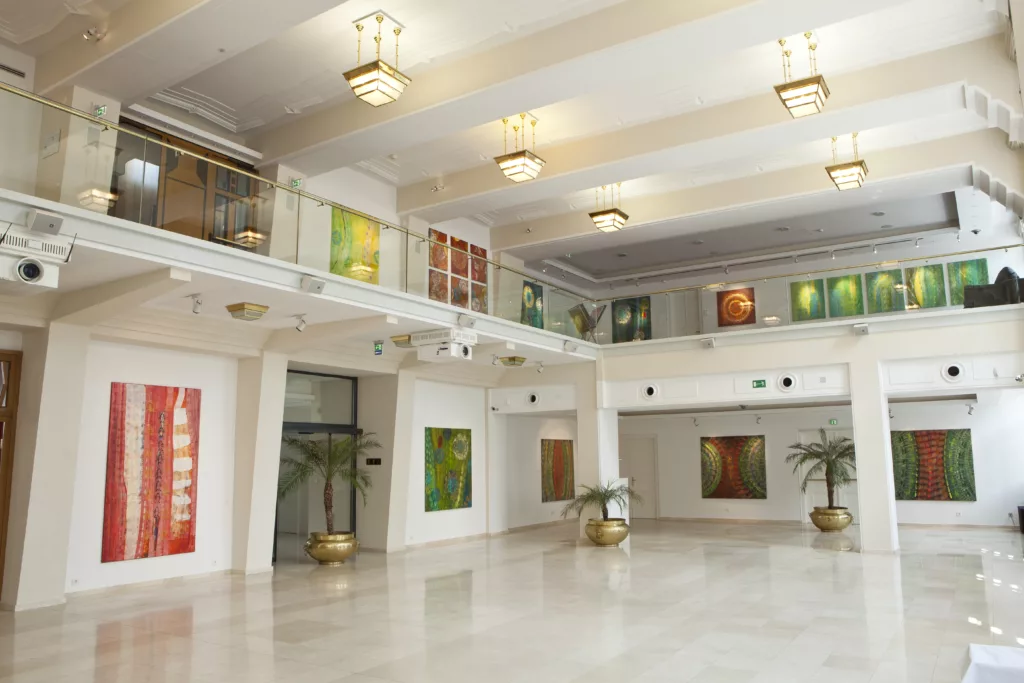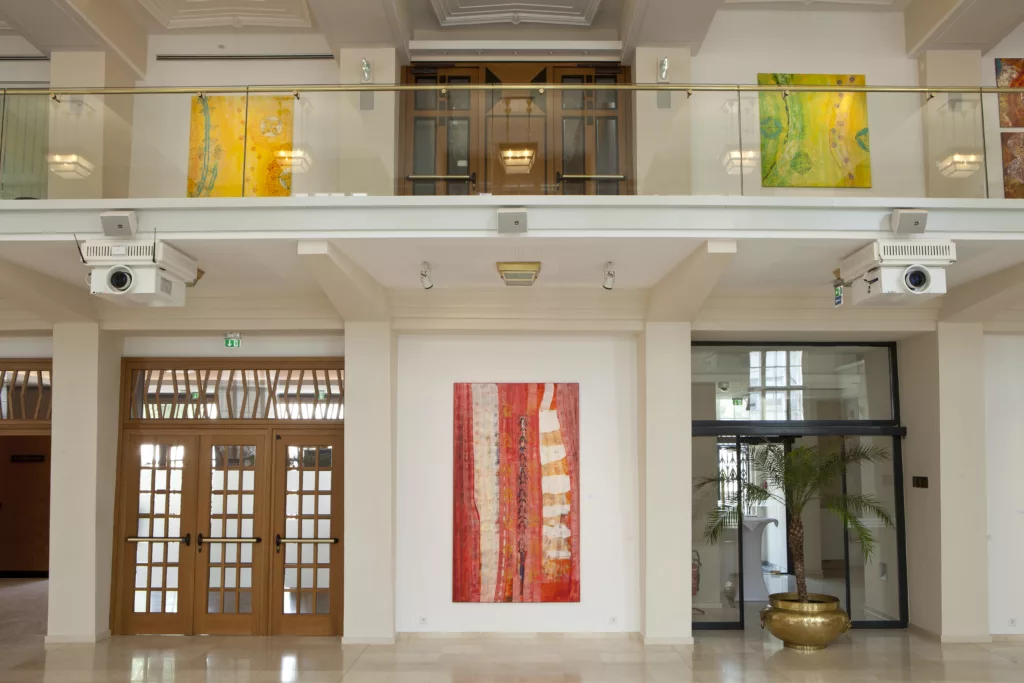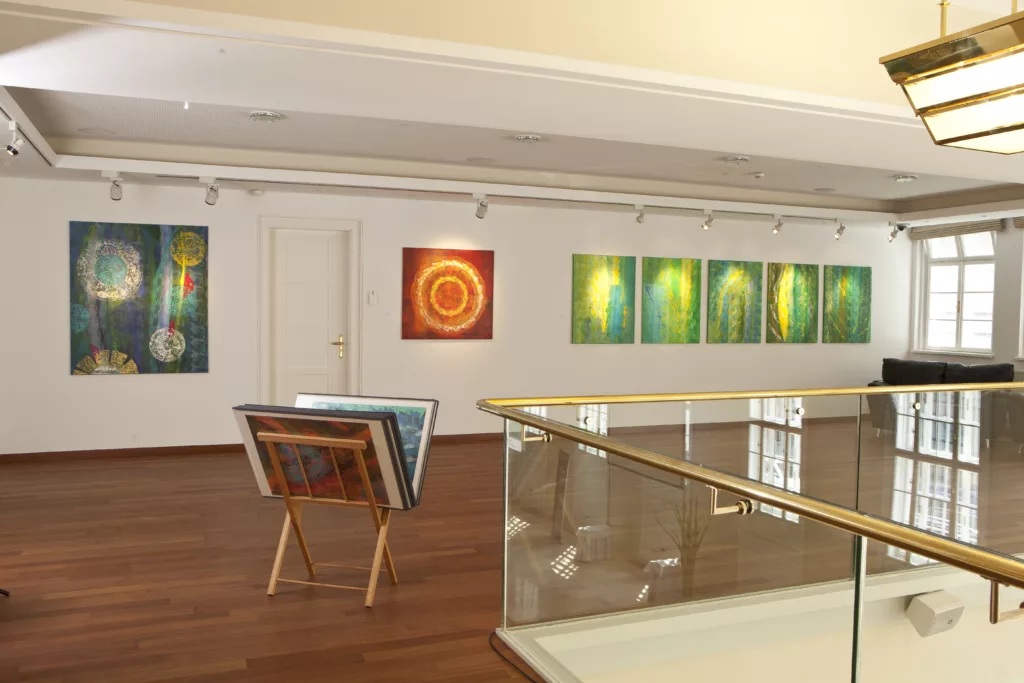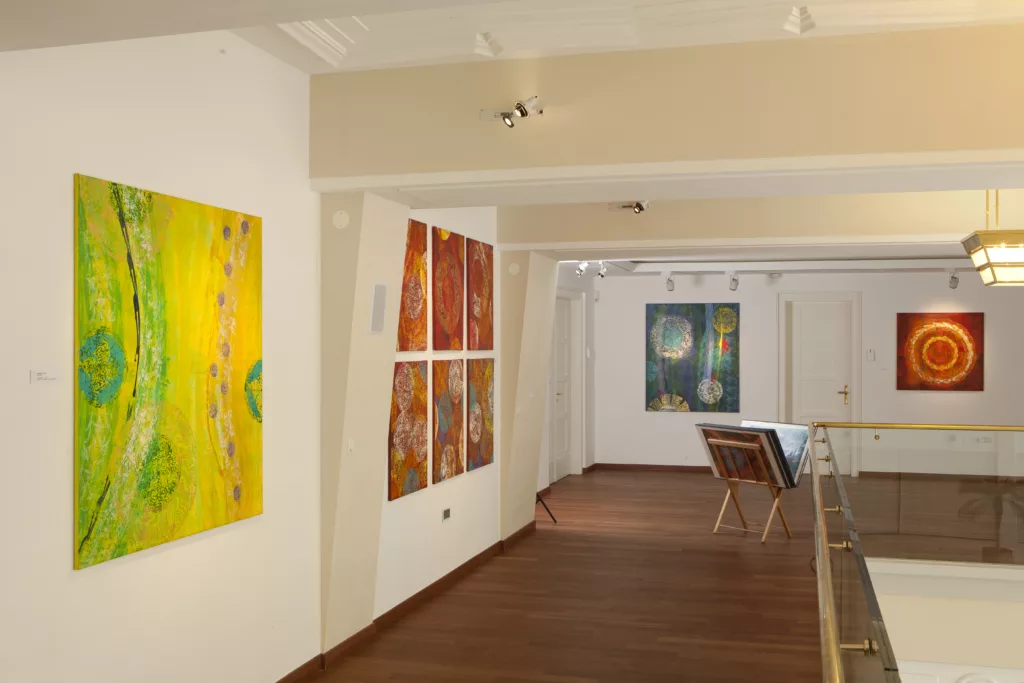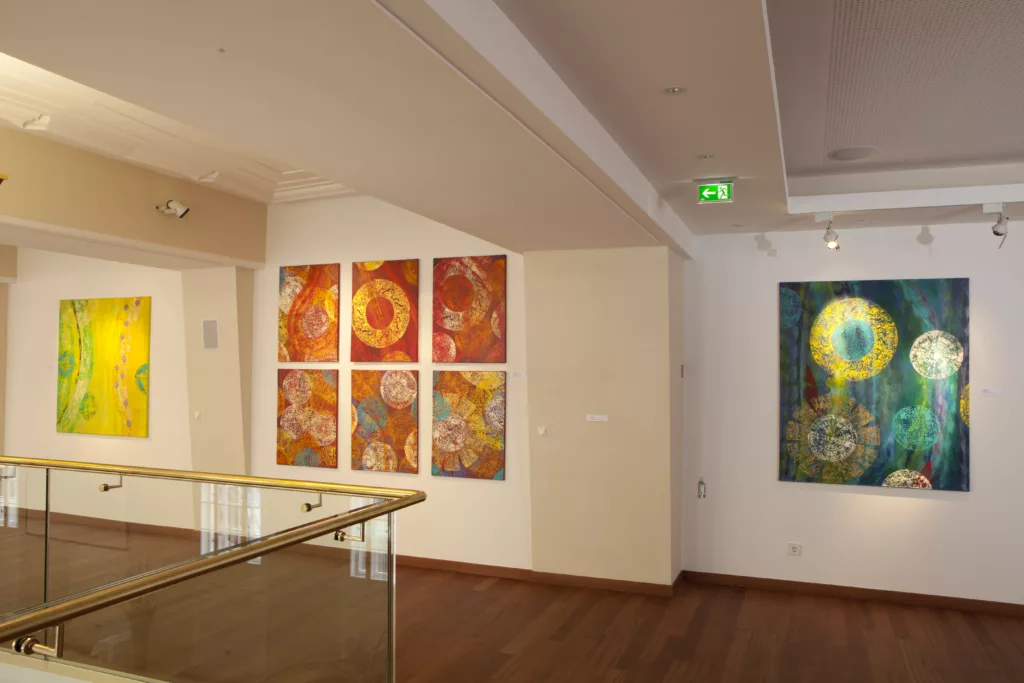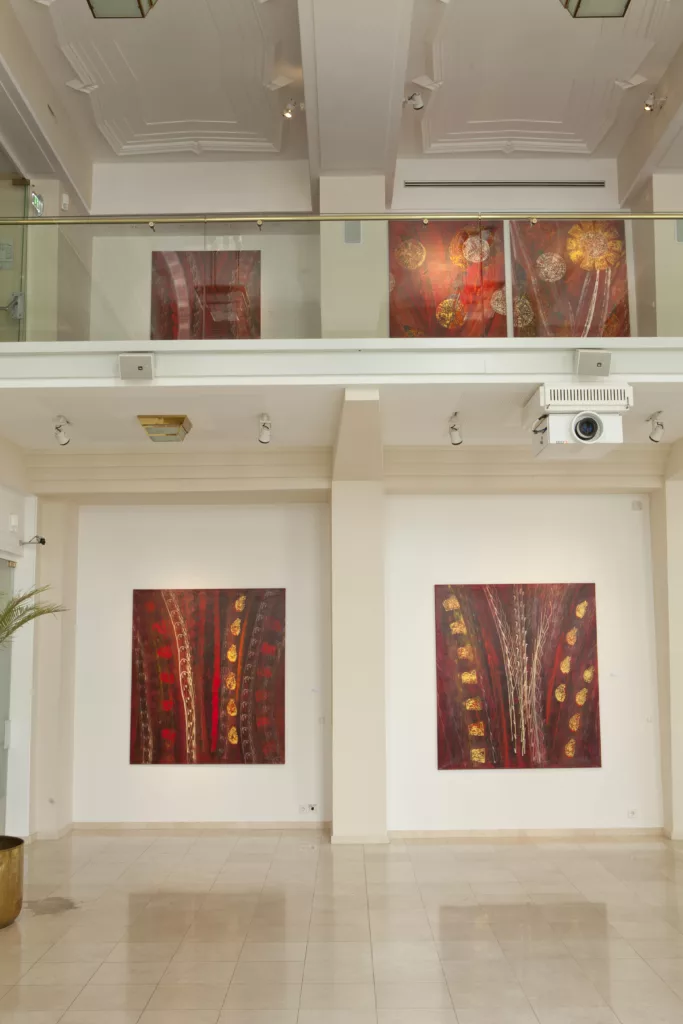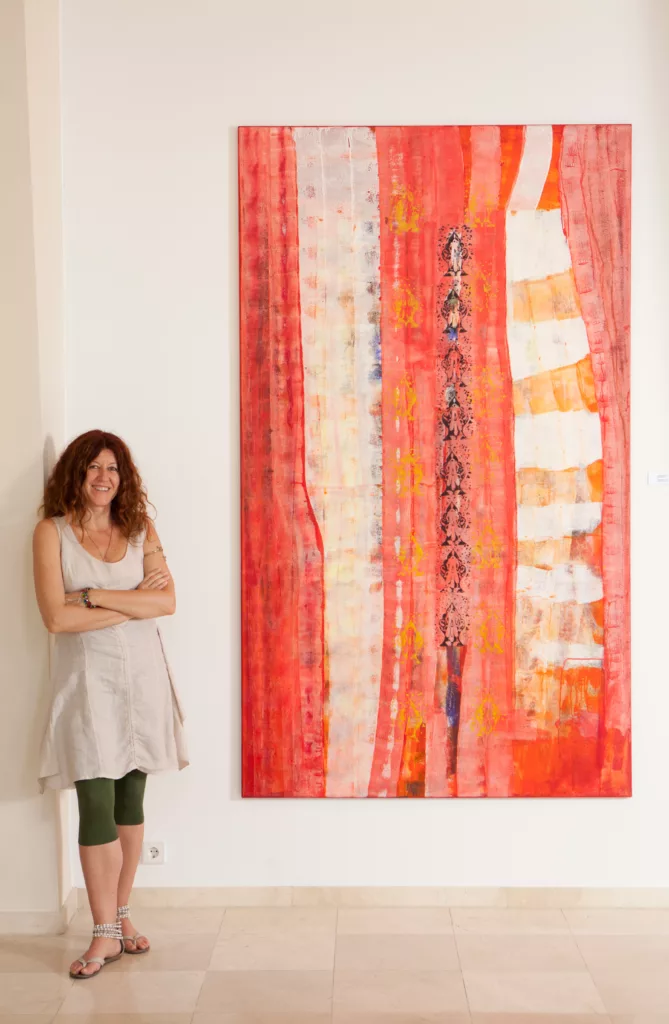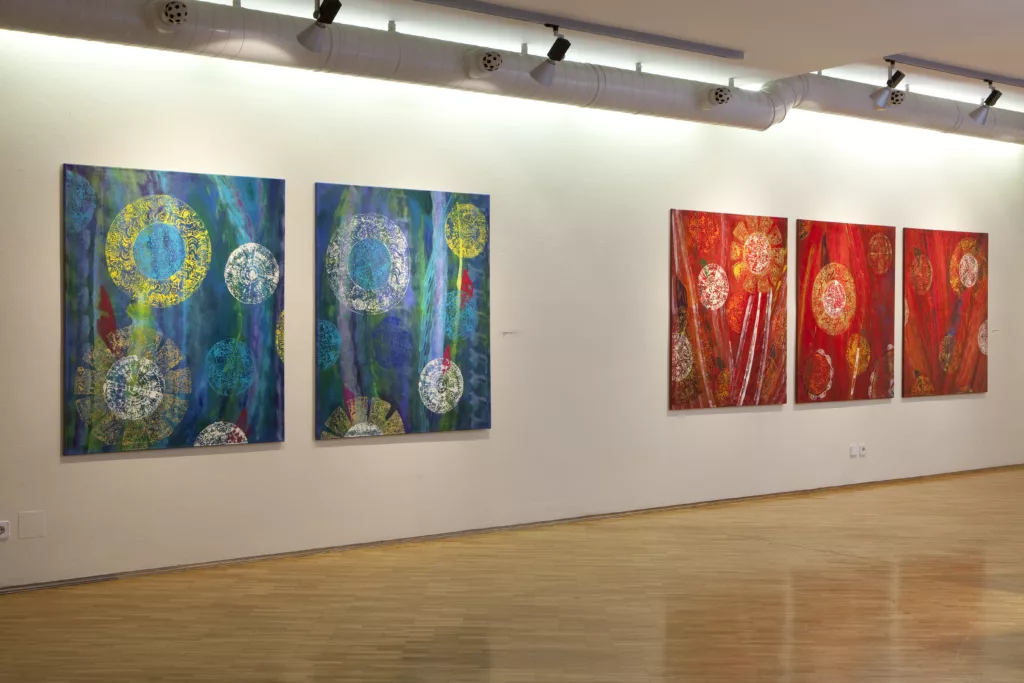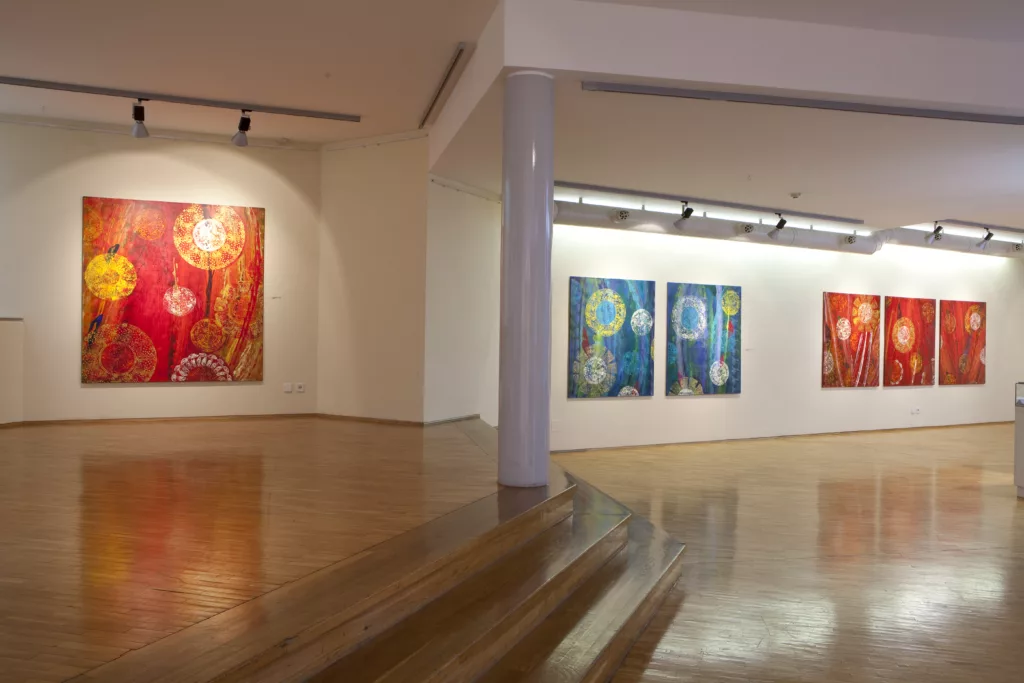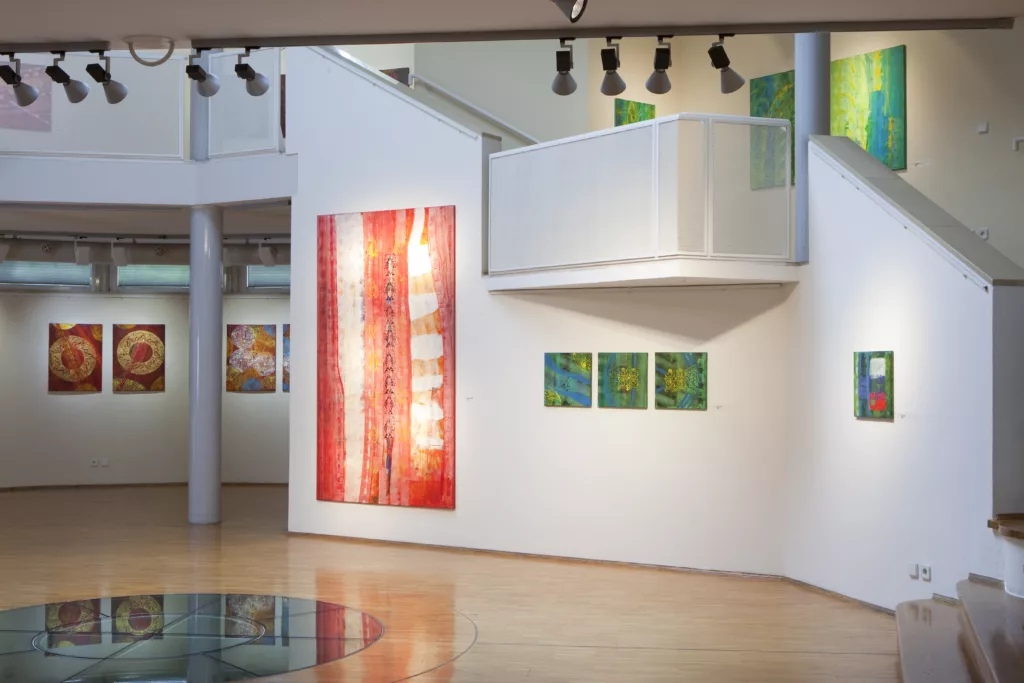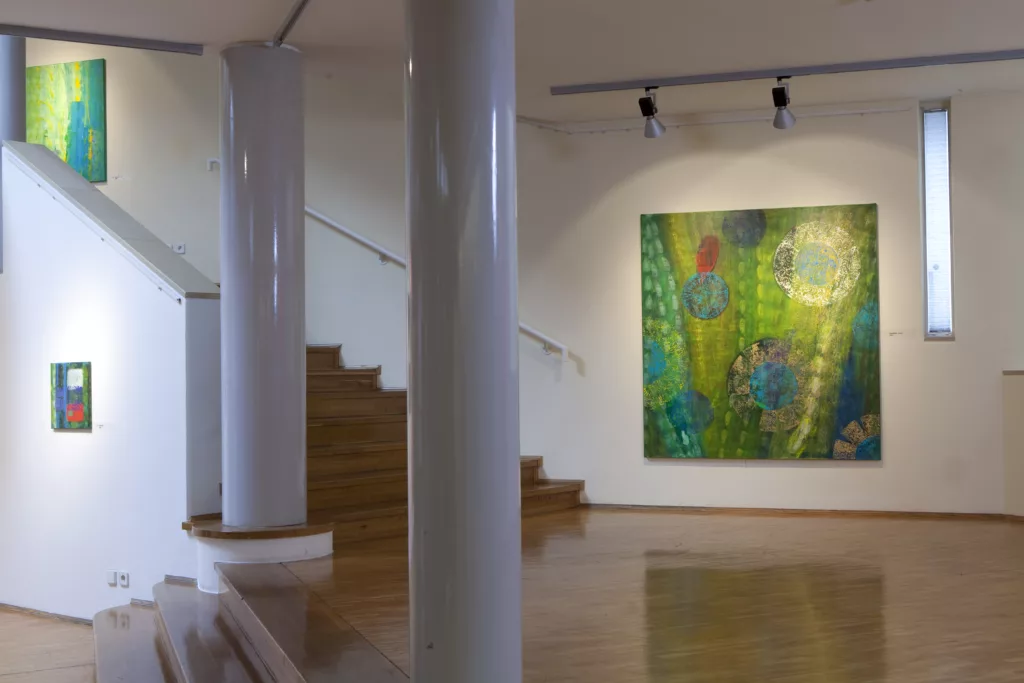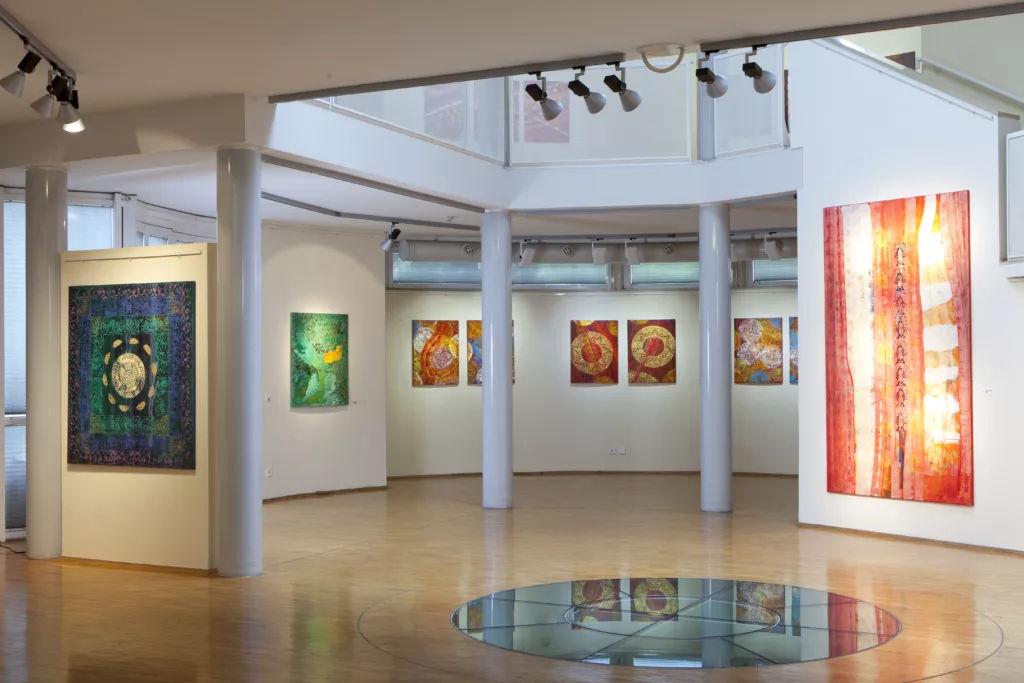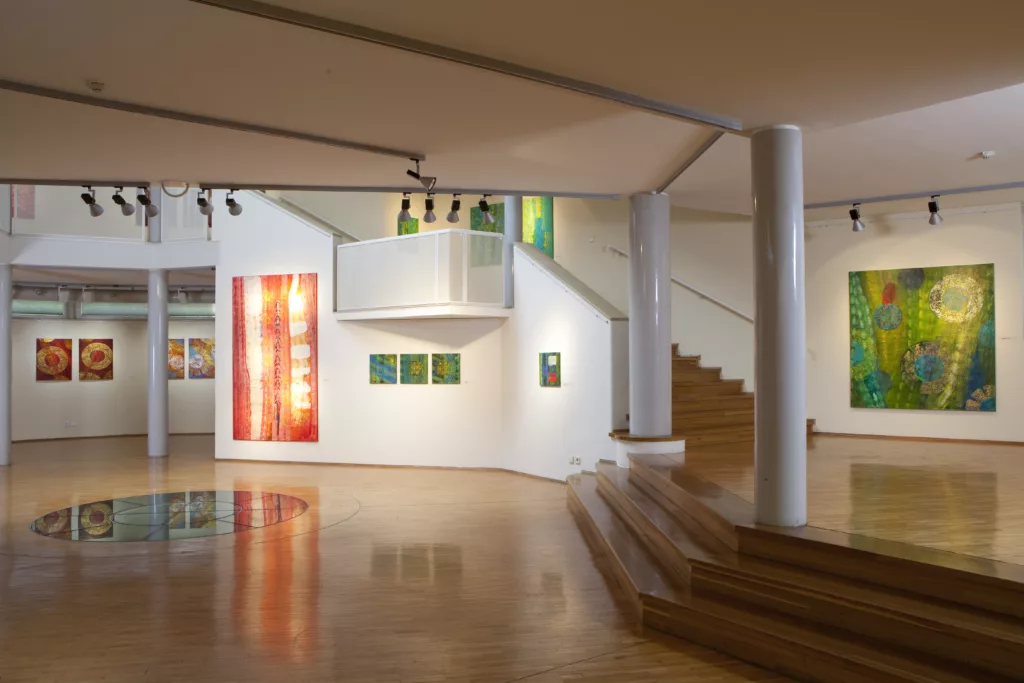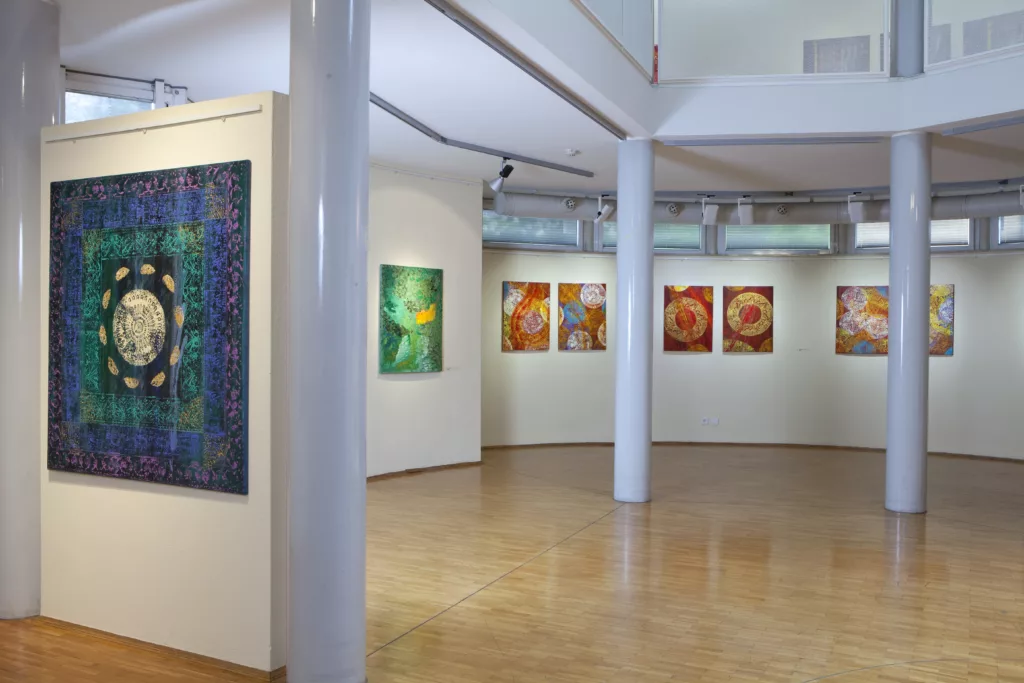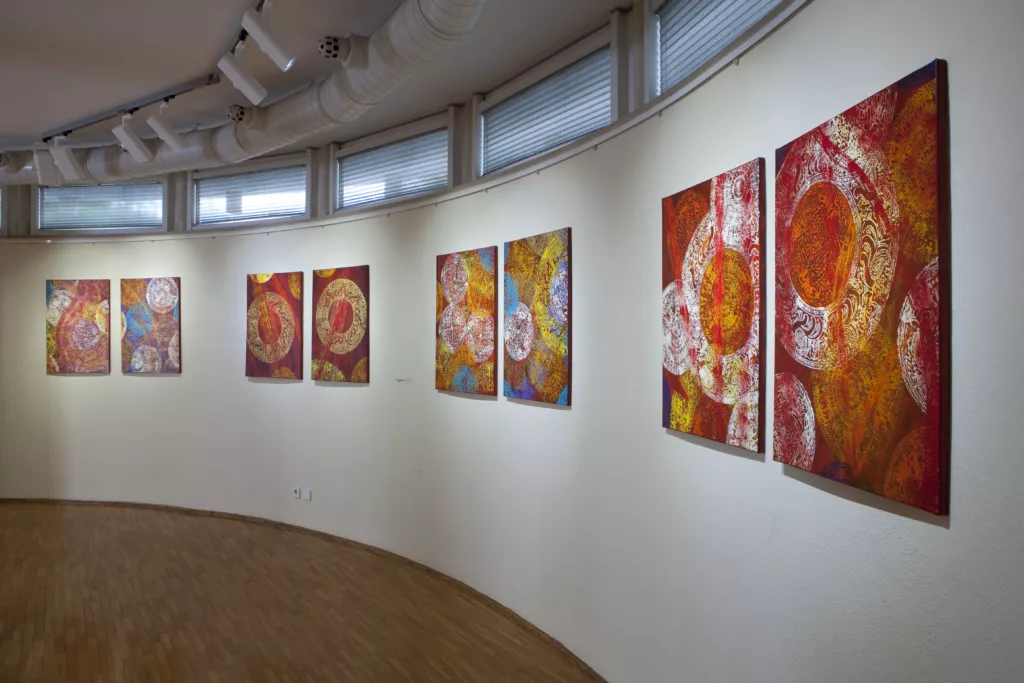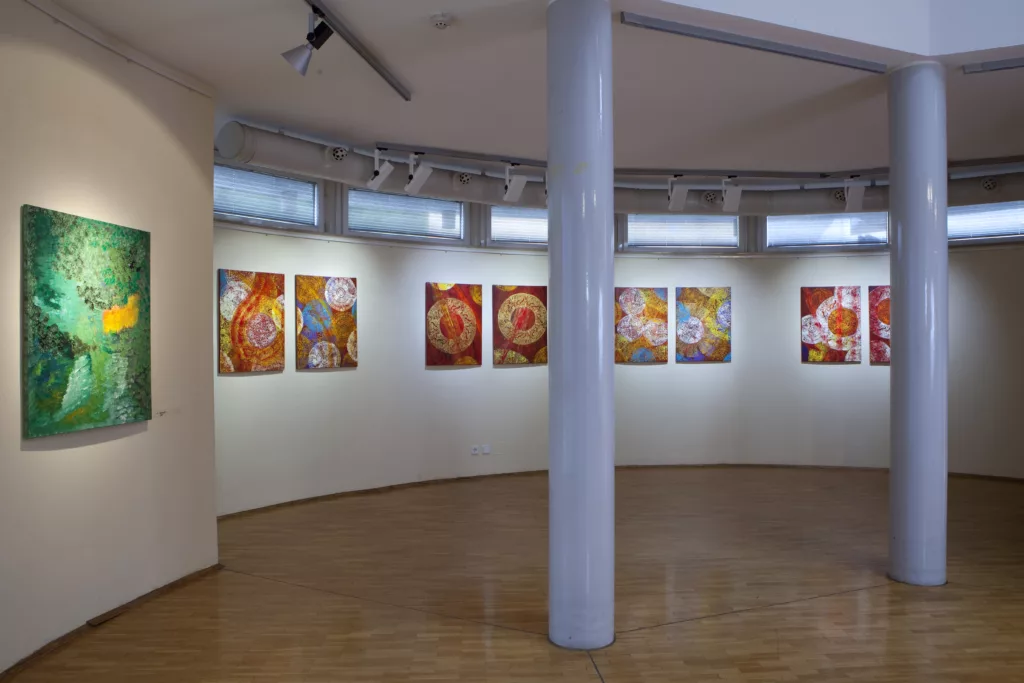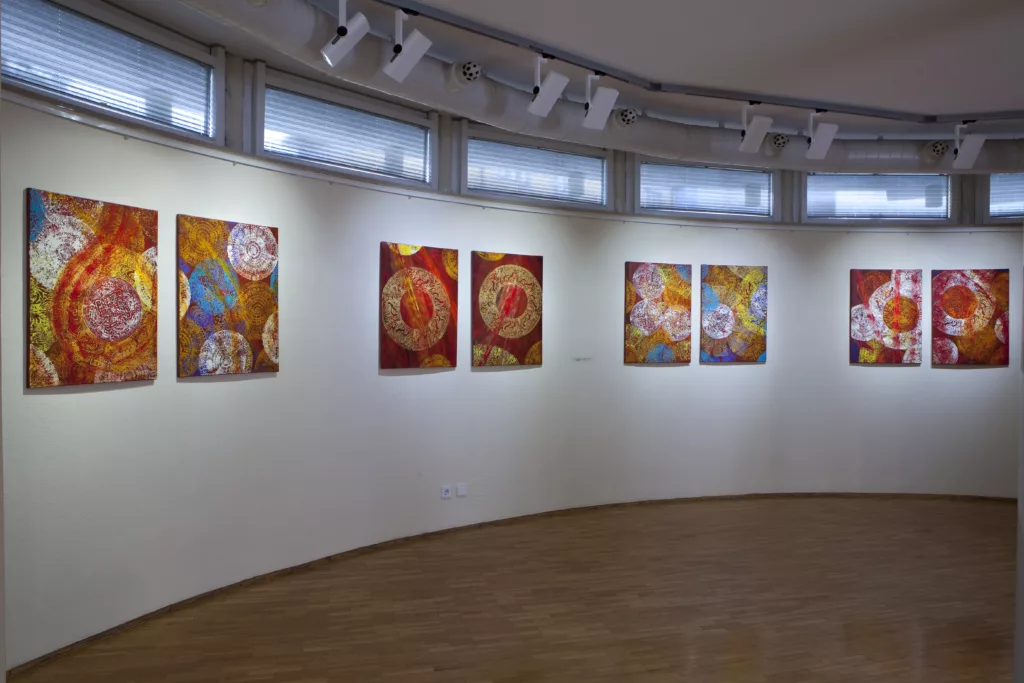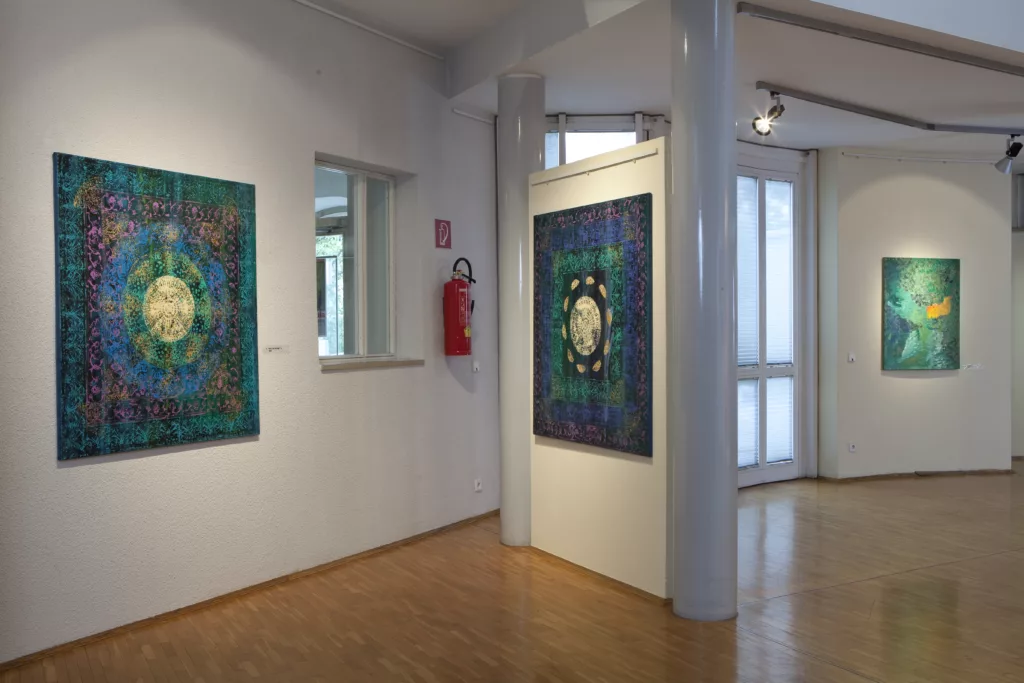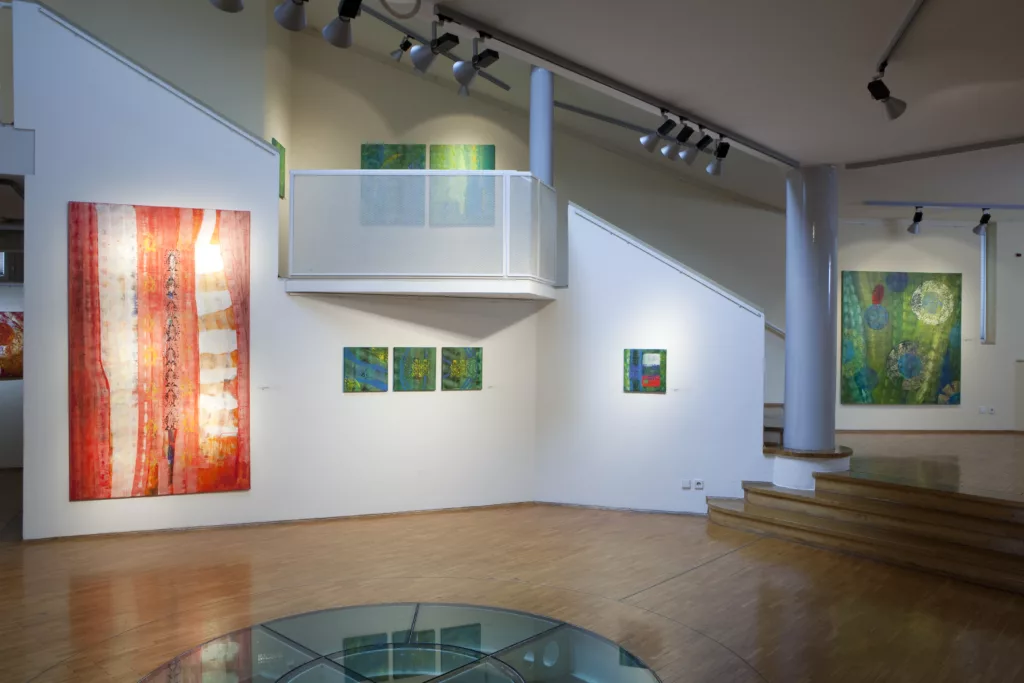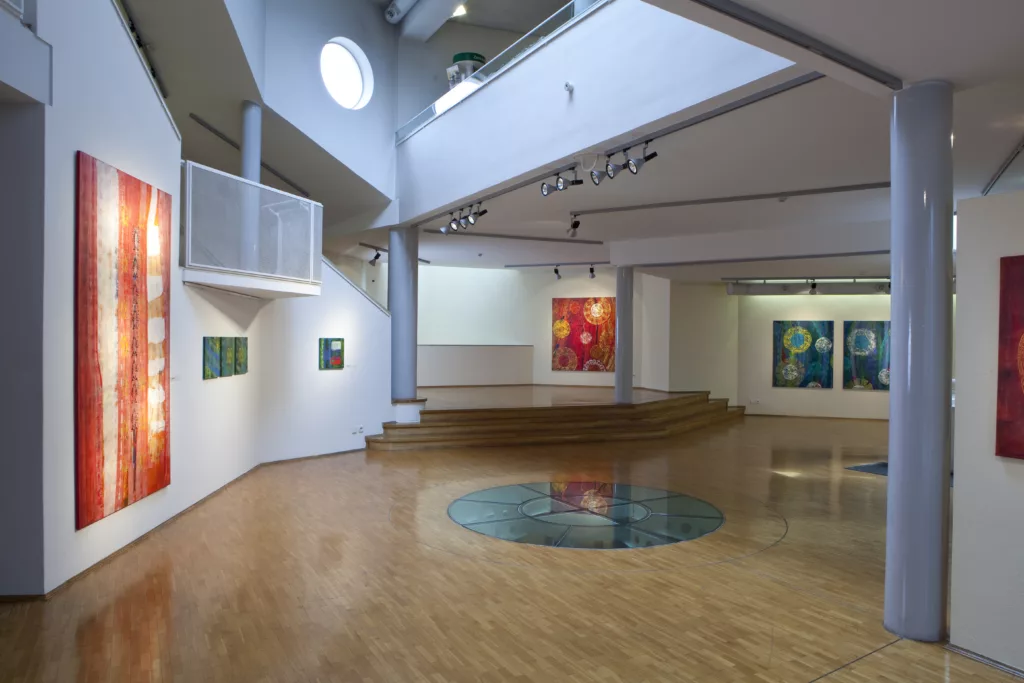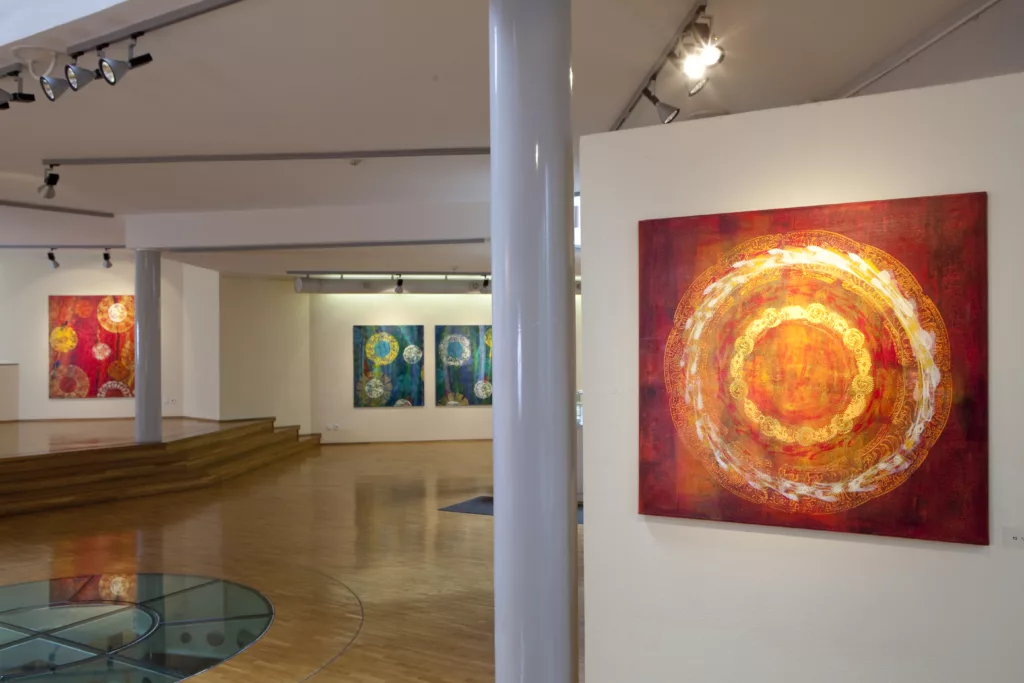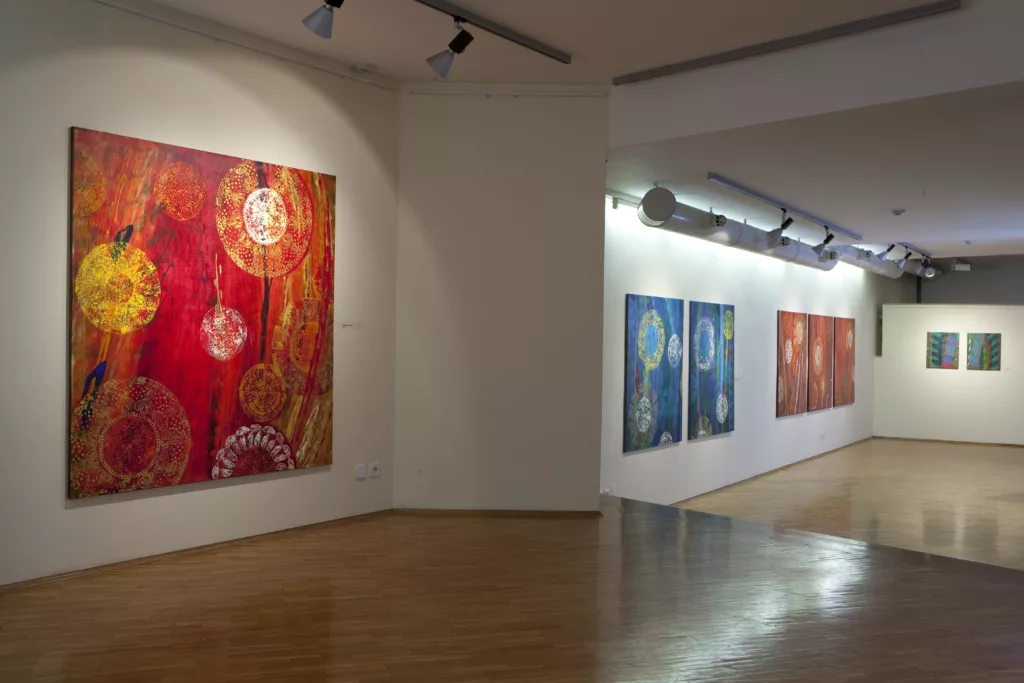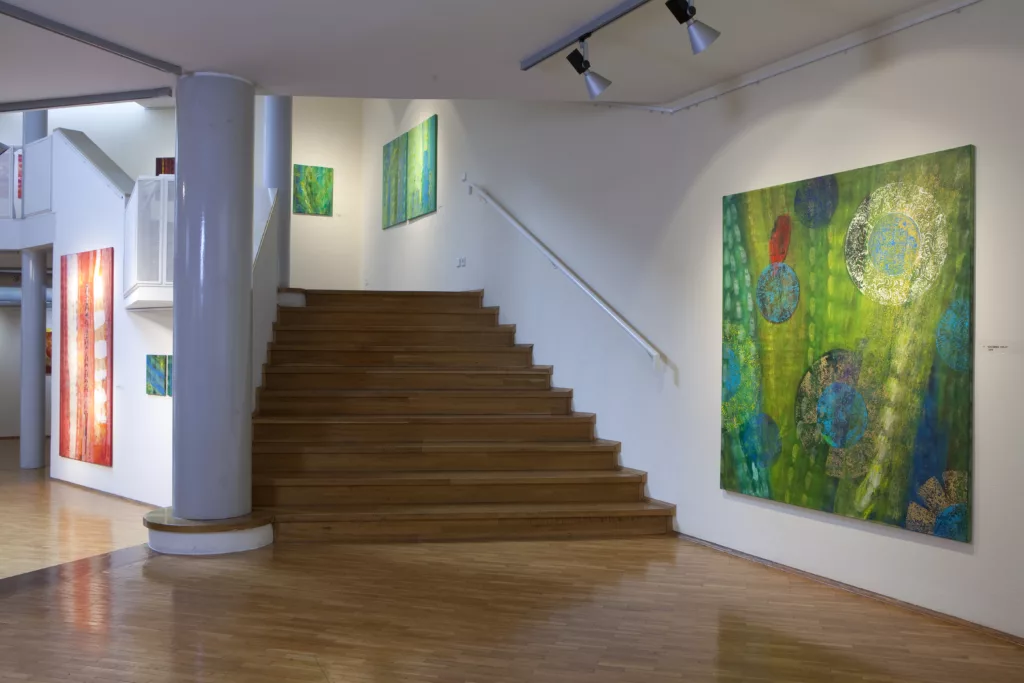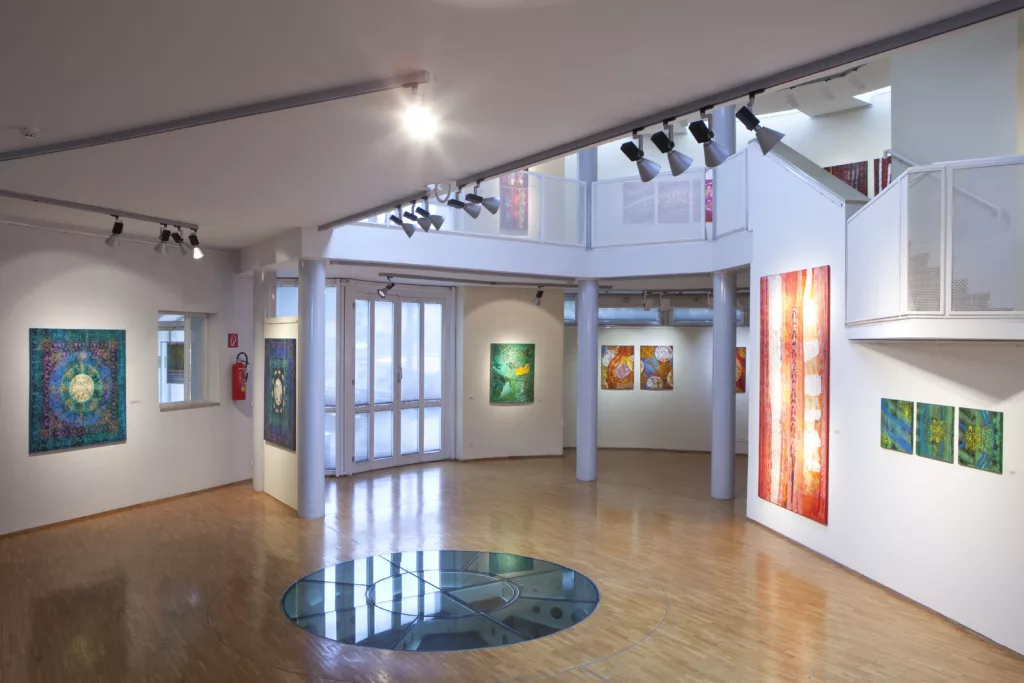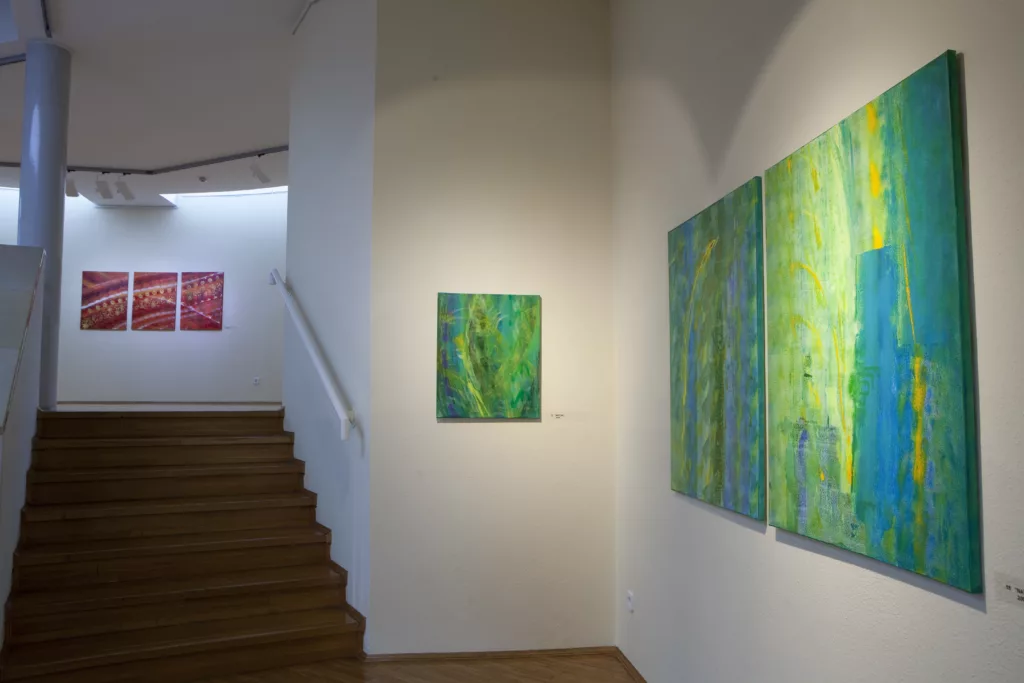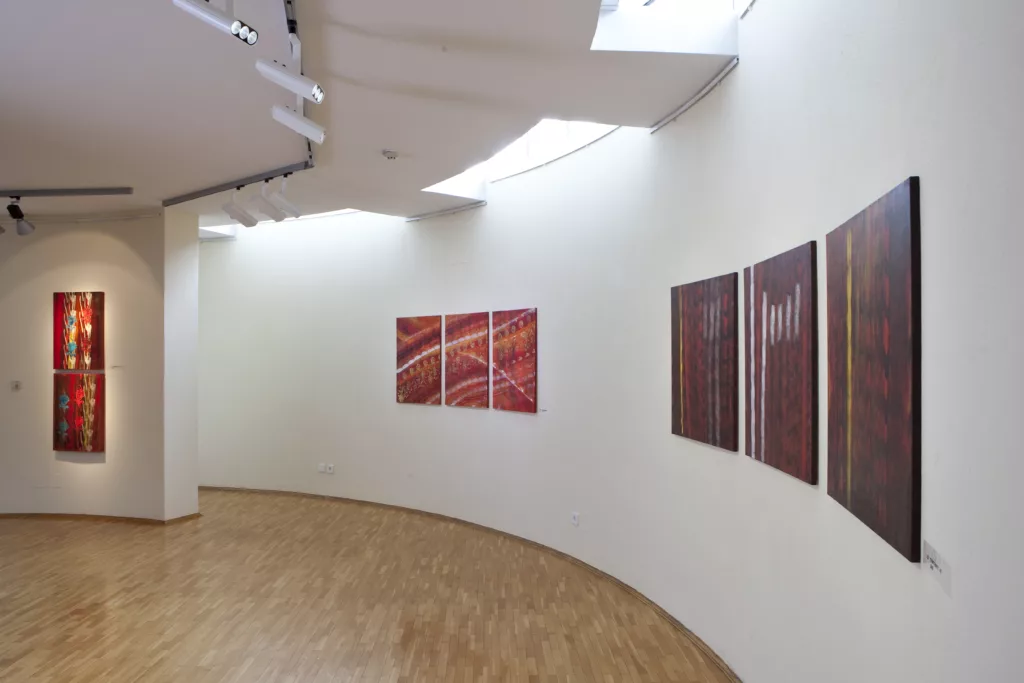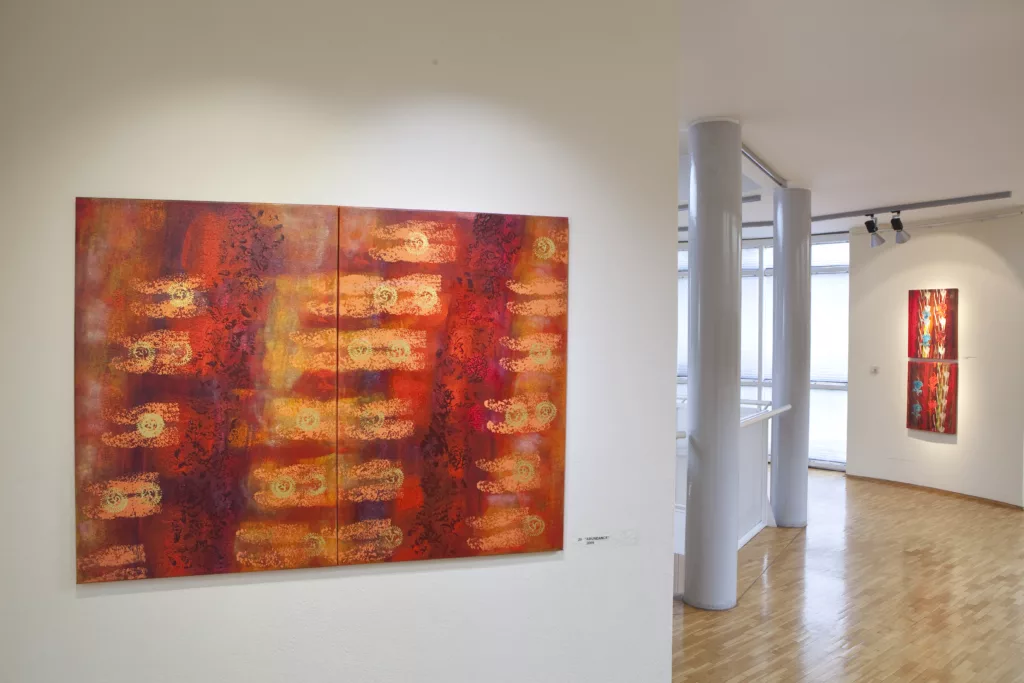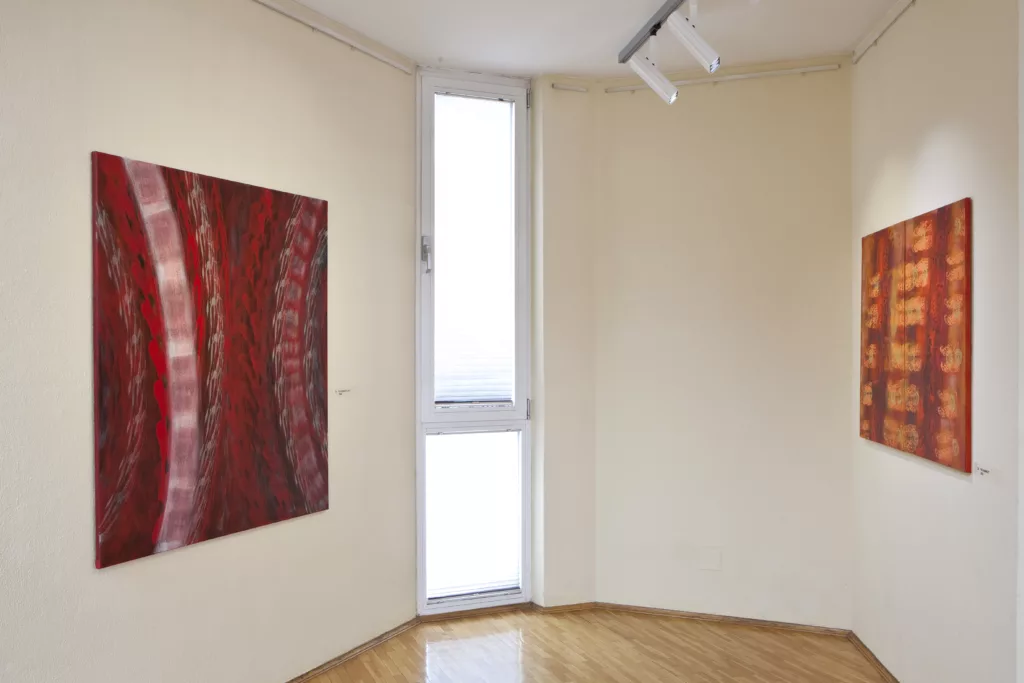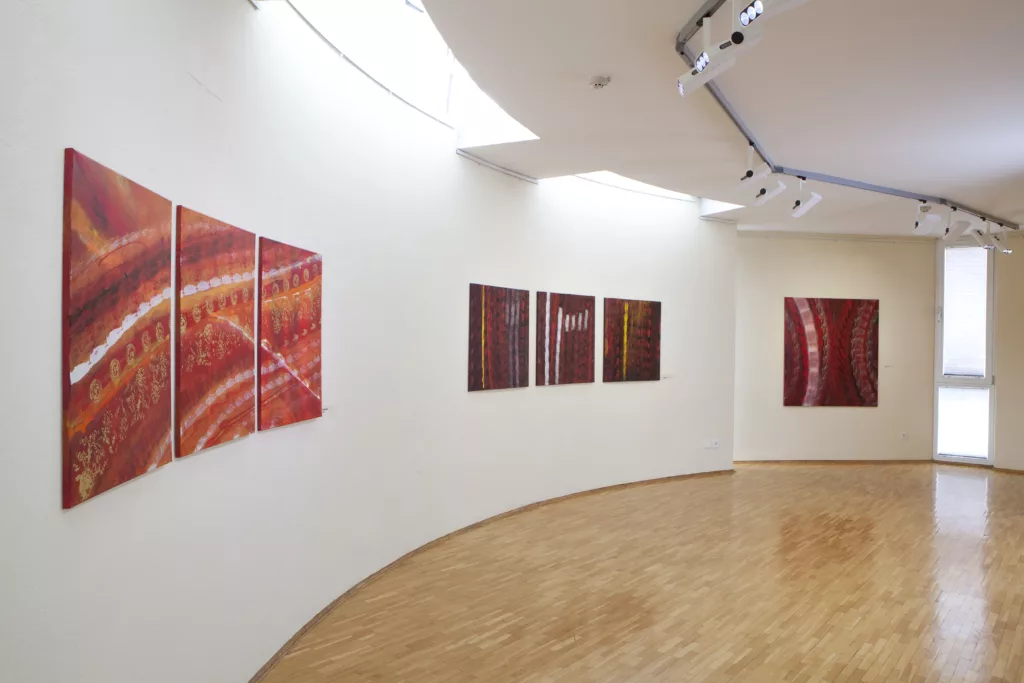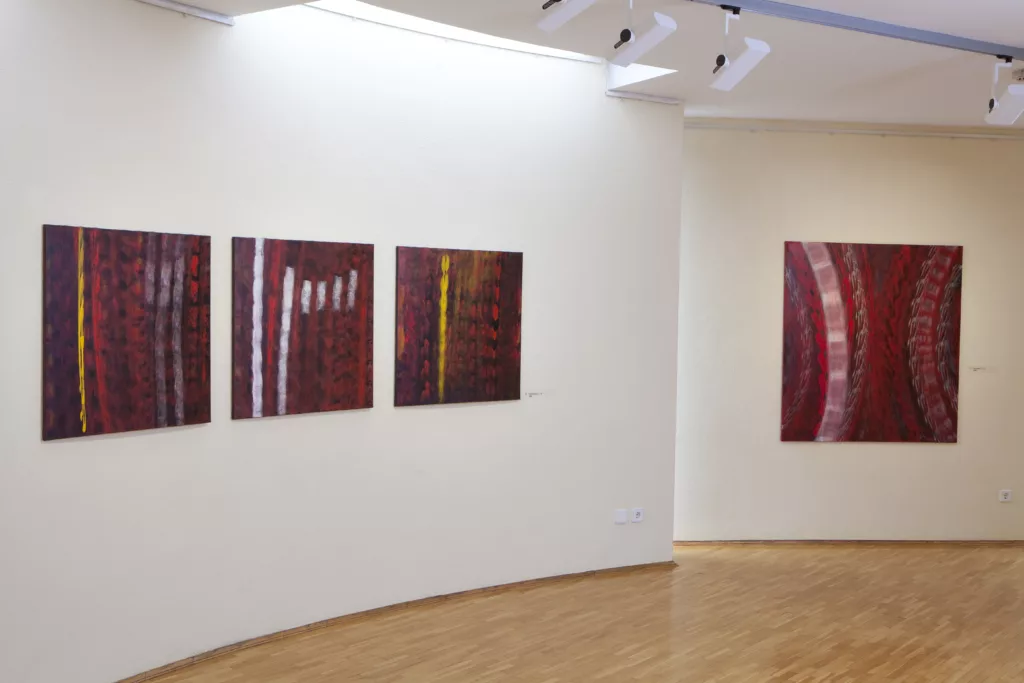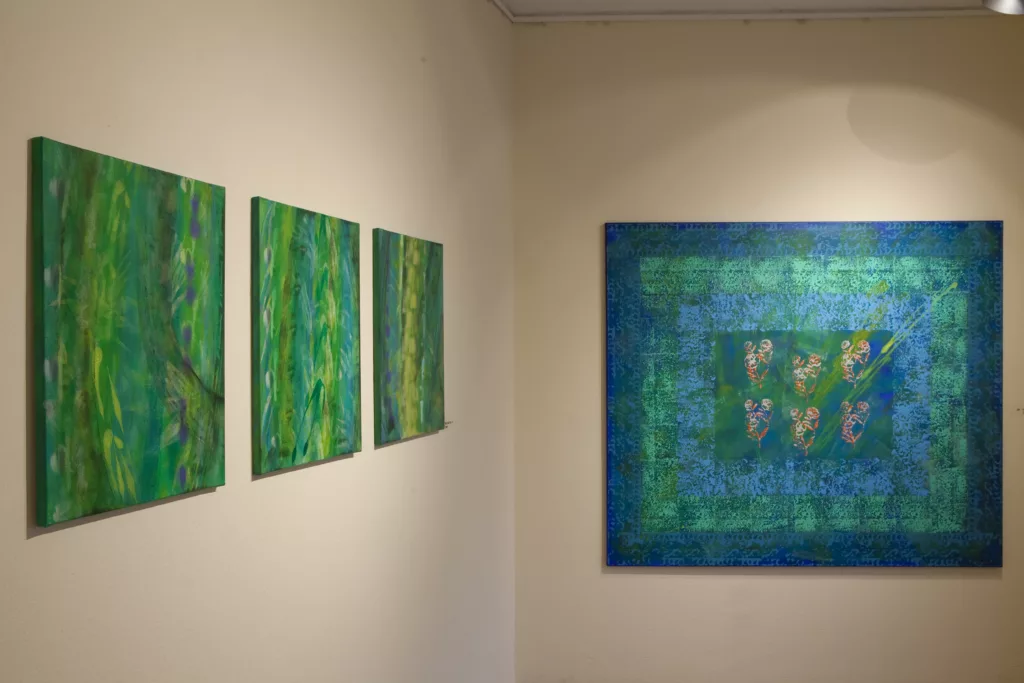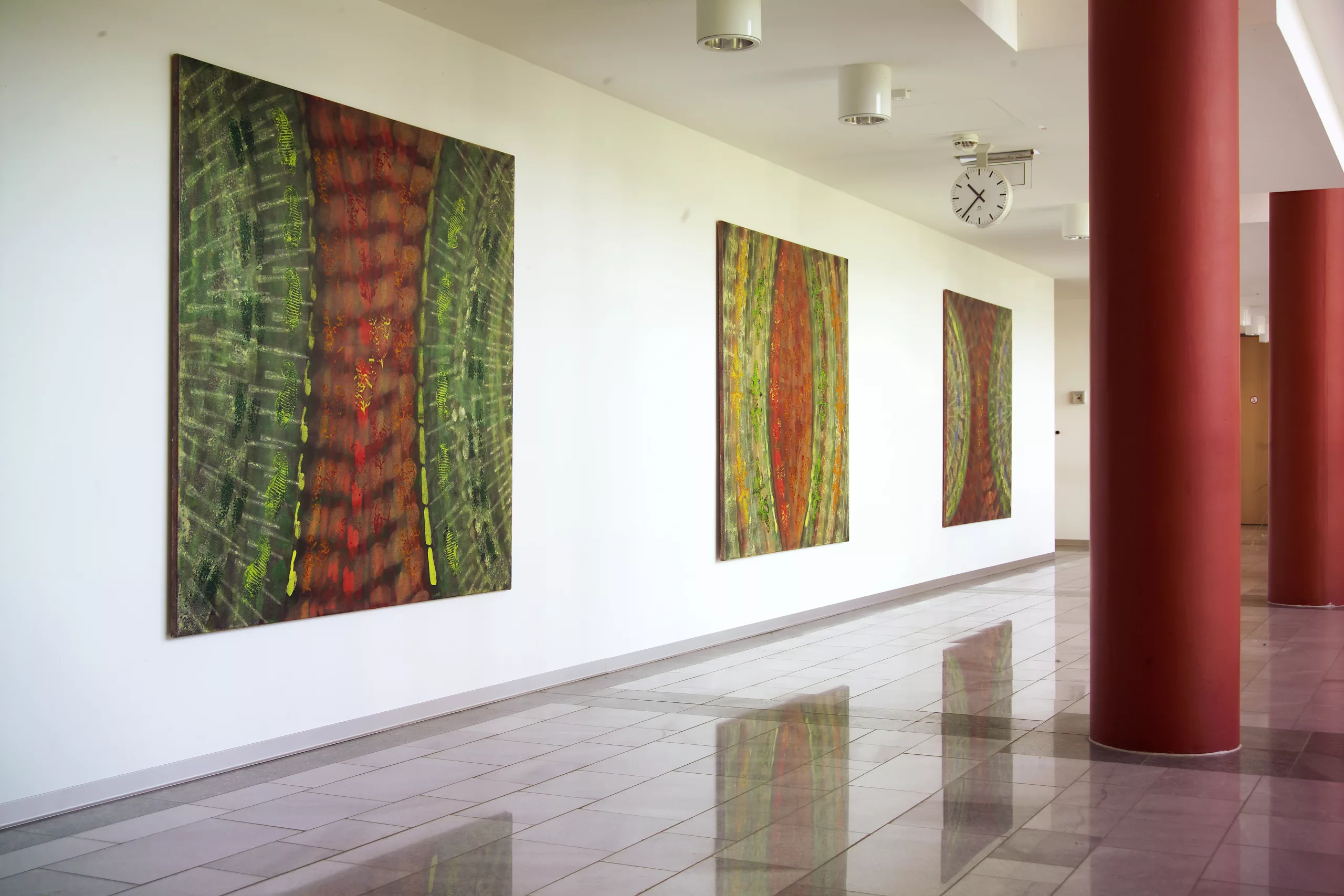
Elisabeth Sula and her Paintings
“One can only delve deep into art by delving deep within oneself.” This thought by Elisabeth Sula can serve as a motto for her painting, and she gained this realization both in her studies – she studied painting with Oswald Oberhuber and philosophy in Vienna – and during her many extended stays abroad. Especially in India, she experienced a spirituality largely lost in Europe, which, despite the problems and worries of daily life, arises from the insight that life without a spiritual dimension descends into materialistic superficiality.
Elisabeth Sula has infused this experience and insight into her art. She manages to convey a world in her paintings that is seemingly simple. The initial glance at her paintings reveals a vibrant cheerfulness; the clear colors, symmetrical compositions, and patterns present a positive world that immediately impacts the casual observer. However, it requires a second look to recognize the depth, the organizing principle used as a pattern that encloses and simultaneously opens spaces. It directs beyond the facade, suddenly becoming like a window behind which a world unfolds and leads into unknown spaces.
Color bands direct the gaze to unknown heights but are firmly anchored in an imaginary ground. They open like vessels or close into a suggested circle that seems to encompass everything, life and death alike. Indicated flower symbols are potential manifestations of inner moods.
A series of paintings titled “HEALING ROOM,” reminiscent of oriental carpets, takes up their meaning as substitute gardens and conveys calmness, order, and a silence of being. The painted frames enclose the image, as if for protection, but they do not confine because the gaze goes deep, exploring spaces full of mystery.
Elisabeth Sula’s painting is color and composition. She paints with strong, almost unmixed colors, vibrant and powerful. Color – repeatedly color – red, the color of life; green for growth; yellow for light. And she translates her non-representational, geometric, or vegetative motifs into static and movement, into space and surface. One feels the joy in doing, as a deeply felt realization of life and creation that brings that inner certainty providing strength and balance, a prerequisite for artistic work.
Angelica Bäumer Culture Journalist and Author
Elisabeth Sula – Places of Happiness
The artist Elisabeth Sula names her current exhibition at the Novomatic Forum “Places of Happiness.” Interpretations of what a place of happiness is or can be are diverse, with each person bringing their own images and associations.
Places of happiness can be imagined locations, such as Clemens Brentano’s Vaduz in the attic of his childhood, or real places one has encountered as places of happiness. Often, we conceive of places that we presumably label as places of happiness, even if we do not know them. Yet, these places can also be right around us or be related to encounters and people. The pursuit of happiness is as old as humanity itself. However, its fulfillment proves to be a complex concept, ranging from the experience of a momentary feeling of happiness to lasting bliss.
In the United States Declaration of Independence, the pursuit of happiness was enshrined as a human right. Happiness has also been a recurring theme in art throughout history, from paradise to modern Arcadia. Contemporary art, through abstraction, has developed new ways of representation that reach far into the often linguistically intangible intermediate areas of life.
Elisabeth Sula studied painting and graphics at the University of Applied Arts with Oswald Oberhuber, concurrently pursuing philosophy and art history at the University of Vienna. In her paintings, she always incorporates philosophy thematically or as the basis of her intentions.
“One can only delve deep into art by delving deep within oneself” is one of her guiding principles. Her paintings, therefore, root in a longing for consciousness and authenticity. After a phase of monochrome paintings, the artist discovered color through her stays in India, along with the knowledge of spirituality, which she attempts to express in works like “Healing Rooms,” “Knowing Fields,” or “Centering.” Works like “Celebrate Joy” represent joy in life and the diversity of life itself.
The starting point for the new works is once again nature. The seen, moods, everyday life, or nature form archetypes of a repertoire of forms that the artist recalls as triggers for artistic implementation on the canvas. However, her paintings show the motifs beyond a literary or documentary perspective; rather, they translate them into an abstract repertoire of forms. The representational and illustrative aspects of the objects disappear, the arrangement of colors in the background becomes increasingly important, and the drawing style defies any description. The image is truly non-representational yet remains open to associations.
On the canvas, Elisabeth Sula develops her own world that is not in contradiction to nature but tries, through the possibilities of art, to delve into the origins of any form and bring these basic elements of nature to a different, perhaps unfamiliar level. Seen in this way, her painting is located at a special intersection, where the two systems, that of nature itself and that of painting, come together. Perhaps it is indeed as Nietzsche wrote, that art helps humans become aware of the totality of existence. It is certainly a means of a sensitive approach to the interstices of our everyday life.
Mag. Silvie Aigner
Curator
